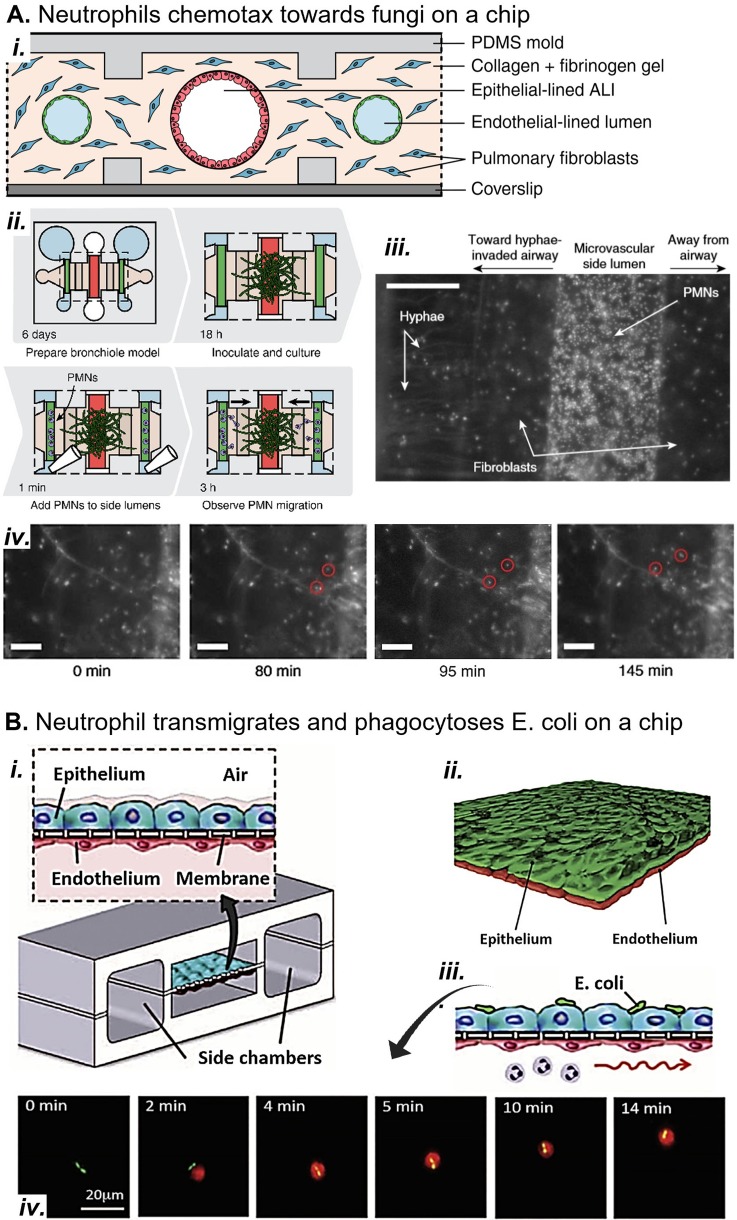FIG. 6.
Models of pulmonary inflammation in vitro. (a) (i) A microfluidic small airway-on-a-chip replicates the endothelium, interstitial fibroblasts, and epithelium. (ii) Fungal infection is simulated by inoculating the epithelium with wild type Aspergillus fumigatus, a model fungal pathogen. (iii) Neutrophils are added to the endothelial channels after the hyphae have extended into the interstitial space. Scale bar, 200 μM. (iv) Neutrophils chemotax from the endothelium through the interstitium toward fungal hyphae, attracted by volatile compounds produced by the fungus. Scale bars, 100 μM. Reproduced with permission from Barkal et al. Nat. Commun. 8, 1770 (2017). Copyright 2017 Authors, licensed under a CC BY 4.0 (https://creativecommons.org/licenses/by/4.0/).6 (b) (i) and (ii) A microfluidic alveolus-on-a-chip incorporates strain and neutrophil transmigration in a bilayer epithelium-endothelium coculture model. (iii) E. coli on the epithelium attracts neutrophils to transmigrate from the basal channel through endothelium and epithelium. (iv) Two E. coli bacteria (green) on the epithelium are chased and phagocytosed by a neutrophil (red) on the epithelium of the device. Reproduced with permission from Huh et al., Science 328, 1662 (2010). Copyright 2010 AAAS.63

